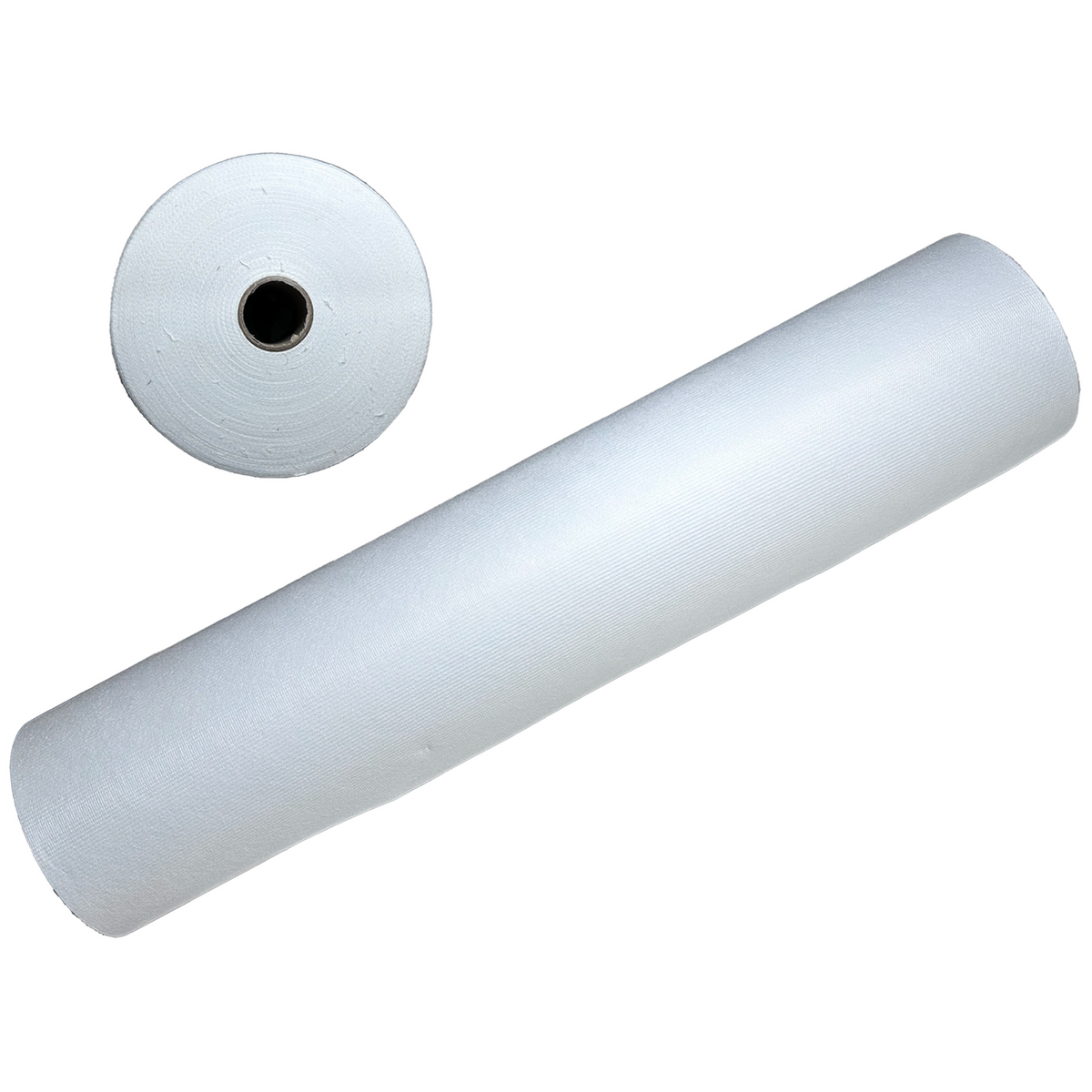🔑 Key Takeaway:
Polyester membrane is a non-woven, high-strength reinforcement fabric used in a variety of roofing, waterproofing, and sealing systems to increase durability, flexibility, and weather resistance. It’s commonly embedded in liquid-applied coatings and bituminous membranes to prevent cracking and extend service life.
🔷 What Is a Polyester Membrane?
A polyester membrane, also known as poly reinforcement fabric or poly mat, is a spun bond, non-woven fabric made from long polyester fibers that are bonded together using heat and pressure. It is specifically engineered for use in roofing and waterproofing systems to reinforce and stabilize coatings or membranes.
It comes in rolls, usually ranging in width from 4" (for flashing details) up to 40" or more for full-surface coverage. The weight of the membrane is measured in grams per square meter (g/m²), with common options being 100g/m², 150g/m², and 200g/m² depending on the required strength and flexibility.
🔷 Why Use Polyester Membrane?
Polyester membrane solves several critical issues in roof systems:
-
Crack prevention: It bridges small cracks and resists splitting under building movement.
-
Strength enhancement: Adds tensile strength to coating systems, especially over seams and flashing.
-
Improved flexibility: Allows membranes to stretch and move with the roof surface.
-
UV and chemical resistance: Performs well under harsh environmental conditions when embedded properly.
🔷 Top Uses of Polyester Membrane in Construction and Roofing1. Liquid-Applied Roofing and Waterproofing Systems
One of the most common uses is embedding poly membrane into liquid coatings, such as:
-
Acrylic roof coatings
-
Silicone coatings
-
Polyurethane waterproofing membranes
-
Bituminous emulsions
How it works:
-
A base coat of the liquid is applied first.
-
The polyester membrane is then laid into the wet coating.
-
A roller or brush presses it in to eliminate air pockets.
-
Top coats are applied over the embedded fabric.
This technique increases tear strength, elongation performance, and membrane thickness.
2. Torch-Down Modified Bitumen Roofing Systems
In APP and SBS torch-down systems, a polyester scrim is often used as an internal reinforcement within the modified bitumen roll.
Alternatively, polyester membrane may be layered between plies or used on detail work, such as:
-
Roof-to-wall transitions
-
Pipe penetrations
-
Skylight bases
Its heat resistance allows it to be used under flame applications when appropriate grades are selected.
3. Roof Repair and Flashing Reinforcement
Polyester membrane is ideal for reinforcing:
-
Seams
-
Cracks
-
Flashing transitions
-
Roof drains
-
Gutters and valleys
It’s particularly useful for emergency or permanent repairs using cold-process adhesives or liquid waterproofing.
You can precut the membrane into small strips for patching or use it over large areas to stabilize degraded surfaces.
4. Below-Grade Waterproofing
Polyester reinforcement is commonly used in foundations, retaining walls, and planter boxes when paired with:
-
Elastomeric liquid membranes
-
Bituminous emulsions
-
Cementitious coatings
It allows for flexibility and bridging on rough concrete substrates where cracks or movement may occur.
5. Decks, Balconies, and Planter Boxes
Flat surfaces subject to foot traffic or water pooling benefit greatly from a polyester-reinforced system:
-
Balcony decks coated with elastomeric deck coatings
-
Rooftop patios
-
Green roofs
-
Decorative planters with waterproofing layers
These high-stress areas often see cracking from temperature cycles, making reinforcement crucial.
6. Tank and Reservoir Waterproofing
In water tanks, reservoirs, and containment systems, polyester membrane helps:
-
Reinforce waterproof liners
-
Prevent micro-cracks
-
Improve adhesion and mechanical strength
Used in conjunction with food-grade or potable-safe coatings, it’s a reliable solution for critical infrastructure.
🔷 How to Install Polyester Membrane (Step-by-Step Example)
Here’s a standard procedure for embedding polyester membrane in a liquid roofing system:
-
Clean the surface thoroughly (remove dirt, oil, and old coatings).
-
Prime the surface if required (especially for porous substrates).
-
Apply base coat of the liquid waterproofing at the manufacturer’s recommended mil thickness.
-
Roll out the polyester membrane over the wet coating.
-
Embed it with a brush or roller — work out air bubbles and wrinkles.
-
Overlap edges by 2"–4" where multiple pieces meet.
-
Let it dry, then apply one or more top coats.
🛠 Pro Tip: Use sharp scissors or a utility knife for clean cuts, and wear gloves to keep the membrane free of contamination.
It’s typically sold in:
-
4" x 300' (flashing and seam work)
-
6", 12", 40", and 60" rolls
-
150–300 ft roll lengths
🔷 Final Thoughts: Why Polyester Membrane Is a Must-Have for Roofers and Waterproofing Pros
If you’re sealing a roof, reinforcing a crack, or installing a full waterproofing system, polyester membrane should be part of your toolkit. It brings added strength, movement resistance, and long-term durability — all critical in extending the lifespan of your system.
Whether you’re a contractor working on commercial flat roofs, or a facility manager patching leaks, polyester reinforcement fabric is a low-cost upgrade that delivers high-performance results.
Be sure to check out our posts about All the different types of roofing membranes:
Roof Reinforcement Membranes Explained: Cotton vs. Polyester vs. Fiberglass - Roofing Tools Online

